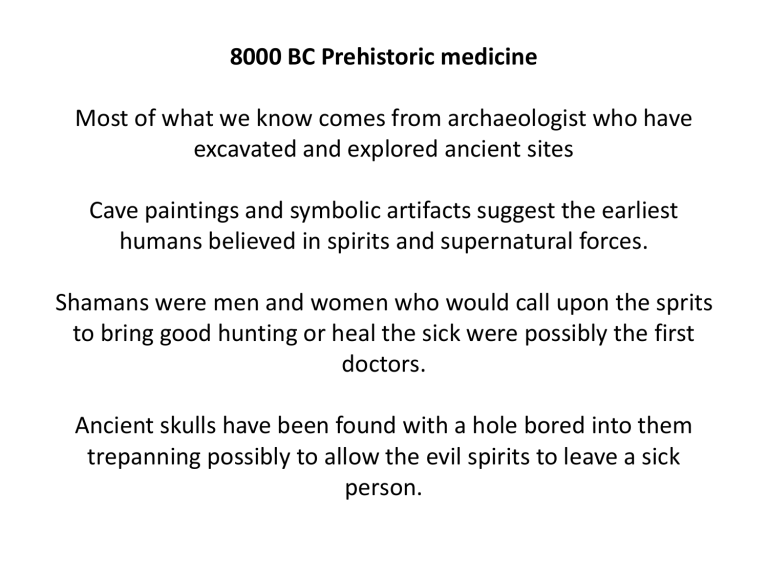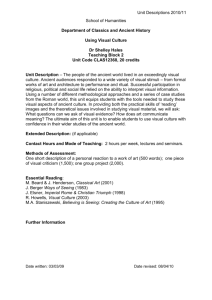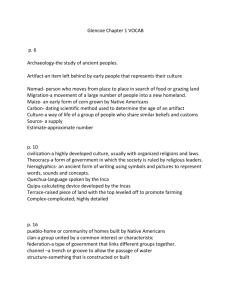8000 BC Prehistoric medicine Most of what we know comes from

8000 BC Prehistoric medicine
Most of what we know comes from archaeologist who have excavated and explored ancient sites
Cave paintings and symbolic artifacts suggest the earliest humans believed in spirits and supernatural forces.
Shamans were men and women who would call upon the sprits to bring good hunting or heal the sick were possibly the first doctors.
Ancient skulls have been found with a hole bored into them trepanning possibly to allow the evil spirits to leave a sick person.
2000 BC ancient Egyptian medicine
Had doctors who specialized in treating particular parts of the body as well as researching the properties of herbal medicines
Kept detailed records of the symptoms and treatments of illnesses formed some of the first medical textbooks
Believed illness was due to the presence of evil spirits or poisons.
Prayer or pleasing the gods with gifts was the only way to cure the disease. Believed in an afterlife, mummified the bodies of
Pharaohs and important people
Ancient Egyptians had first pharmacist who prepared prescriptions or ointments, potions, inhalers and pills by processing plant materials used to treat specific illnesses. Used opium, cannabis, linseed oil.
400 BC to 300 AD Greeks and Romans
Greece was home to one of the earliest civilizations
Hippocrates father of modern medicine possibly most famous name in medicine
Romans: Conquered the Greeks and brought a lot of their ideas about healthcare into use across the Roman Empire.
Realized link between dirt and disease, built aqueducts to supply clean water and sewers to remove waste
Galen a Greek physician dissected animals to find out how their bodies worked, it was illegal to dissect humans. His knowledge led to improved techniques in surgery and new instruments
500-1400 middle ages
using herbal remedies and potions were seen as witchcraft and outlawed by the church, Laws were developed that required training in order to practice medicine
1347 outbreak of bubonic plague (highly
contagious pneumonia) considered punishment from God so nothing done to control rats that infested villages and towns carry the disease
700-1500 Arabic medicines
Refined Hippocrates theories and Islamic physicians began to use the regulation of diet, exercise and prescription of medicinal herbs to treat patients
Large hospitals were involved in training and licensing doctors and pharmacists (in Europe medicine was still governed by religion and superstition)
Used anesthetics by soaking sponges in narcotic drugs and placing over patients nose
1400-1700 The Renaissance
Andreas Versales dissected human bodies and Leonardo DaVinci made first anatomically correct drawings
Church did not permit dissection of “God fearing” bodies so it was often the bodies of criminals or “sinners” that were used, sometimes criminal was alive at beginning of dissection was a part of the punishment
William Harvey new theory heart acts as muscular pump circulated blood
Bubonic plague moved along trade routes from china and killed more than a third of Europe’s population
Surgical instruments were basic, drill, saw, forceps and pliers for removing teeth, if surgeon not available usually the local barber performed operations and removed teeth
1700-1900 18 th and 19 th centuries
Industrial revolution saw a massive change in where people lived moved from small villages to towns that sprang up around the new factories, lived in dirty overcrowded conditions poor sanitation and drinking water. Disease such as cholera, tuberculosis, measles and pneumonia spread quickly and was life threatening
Joseph Lister used antiseptic during surgery to prevent infection
(antiseptic kills germs)
Van Leeuwenhoek made one of the earliest microscopes
Louis Pasteur discovered microorganisms everywhere and linked these microorganism to disease
Florence Nightingale, mother of modern day nursing worked in military hospital during Crimean war
Edward Jenner pioneered earliest vaccinations for smallpox.
1900-2000 20 th Century
Fleming’s discovery of penicillin was not fully developed until World
War II when so many soldiers were dying from infections that 2 researchers at Oxford university were given the task of finding new medicines to treat wounded soldiers; grew large amounts of the penicillium mould and it was used to treat infections during the war life span from 47 years old in 1901 to 77 years in 2000
Vaccinations are now widespread and used to prevent diseases such as yellow fever, polio, measles, mumps, chicken pox and rubella
Medical imagining has improved significantly since the first x-rays, magnetic resonance imagery (MRI) ultrasound, computer tomography
(CAT scans) lead to early diagnosis and treatment increasing the rate of cures
1 st heart transplant Dr. Christian Barnard 1967
1 st in vitro fertilization Louise Brown born July 25 th , 1978
DNA unlocking secrets held within our bodies 1990-2003





